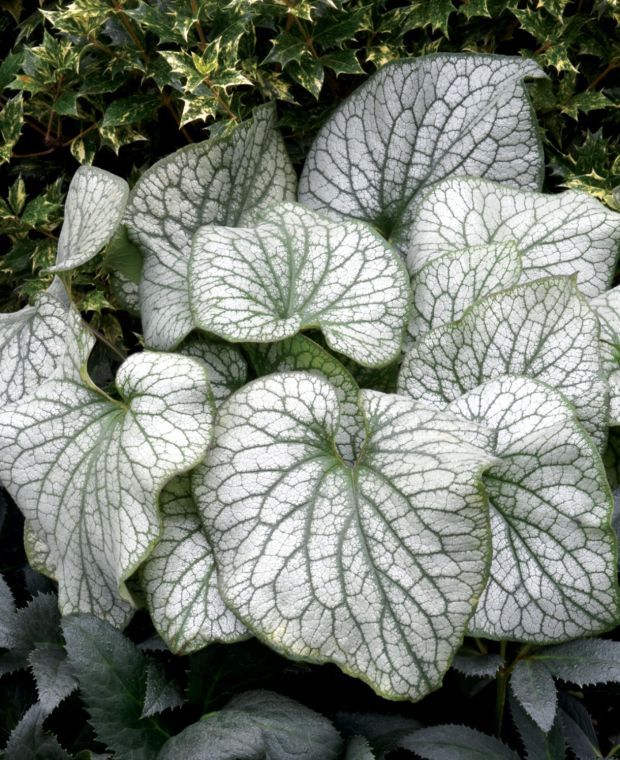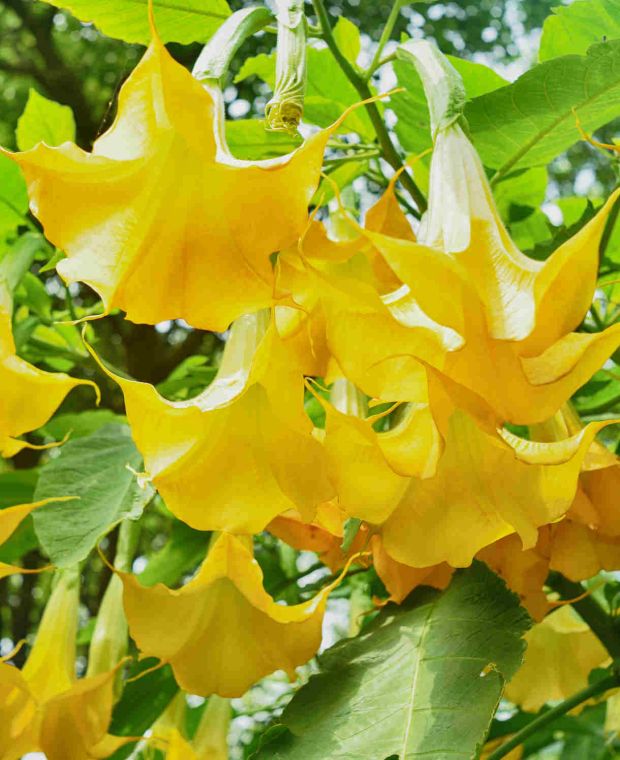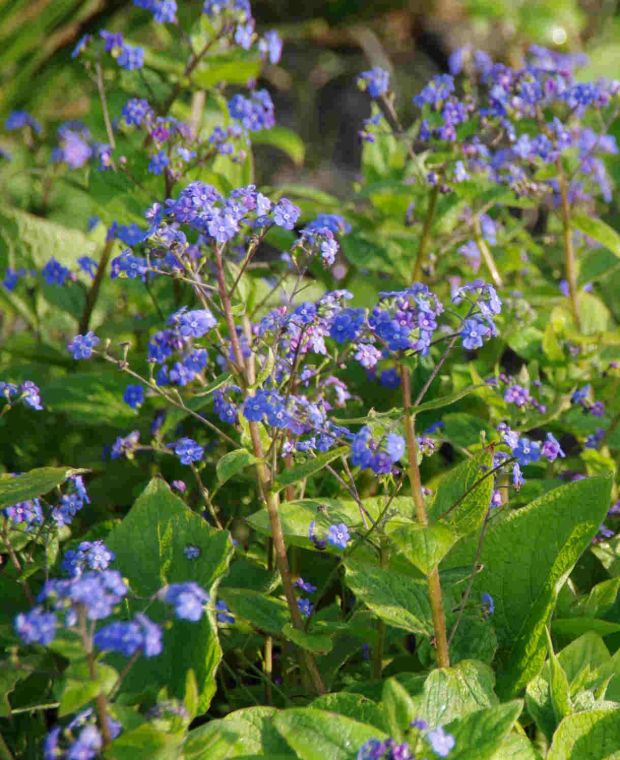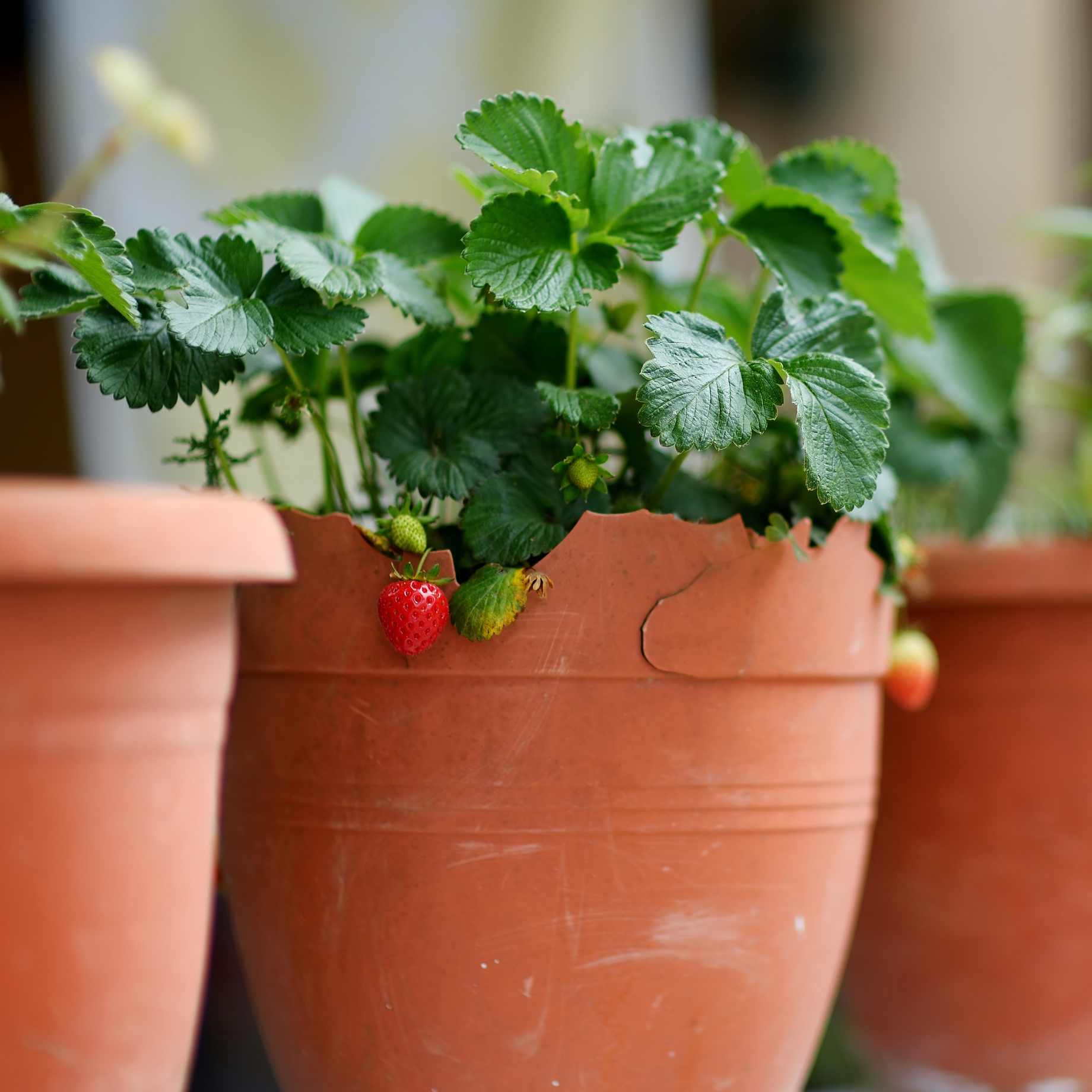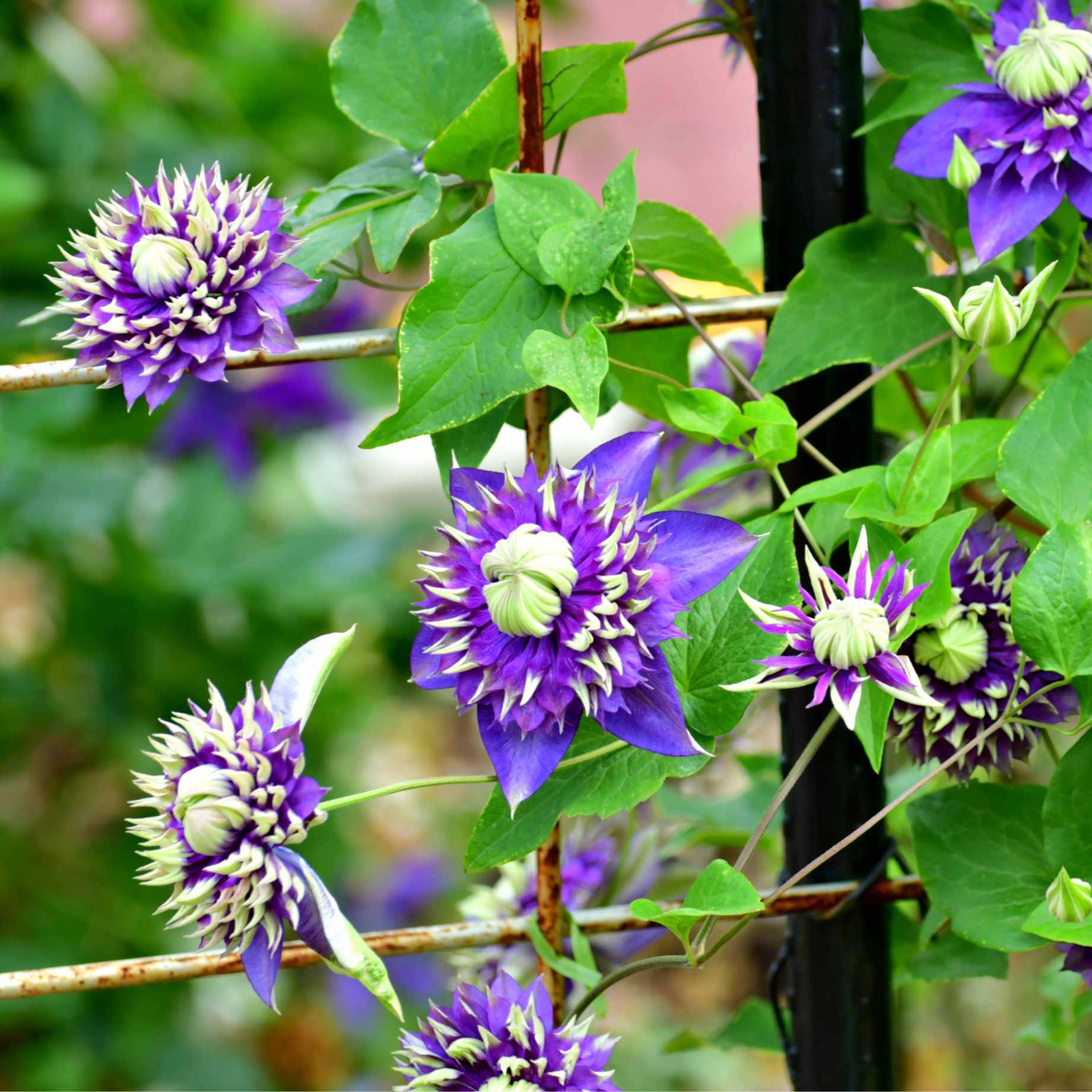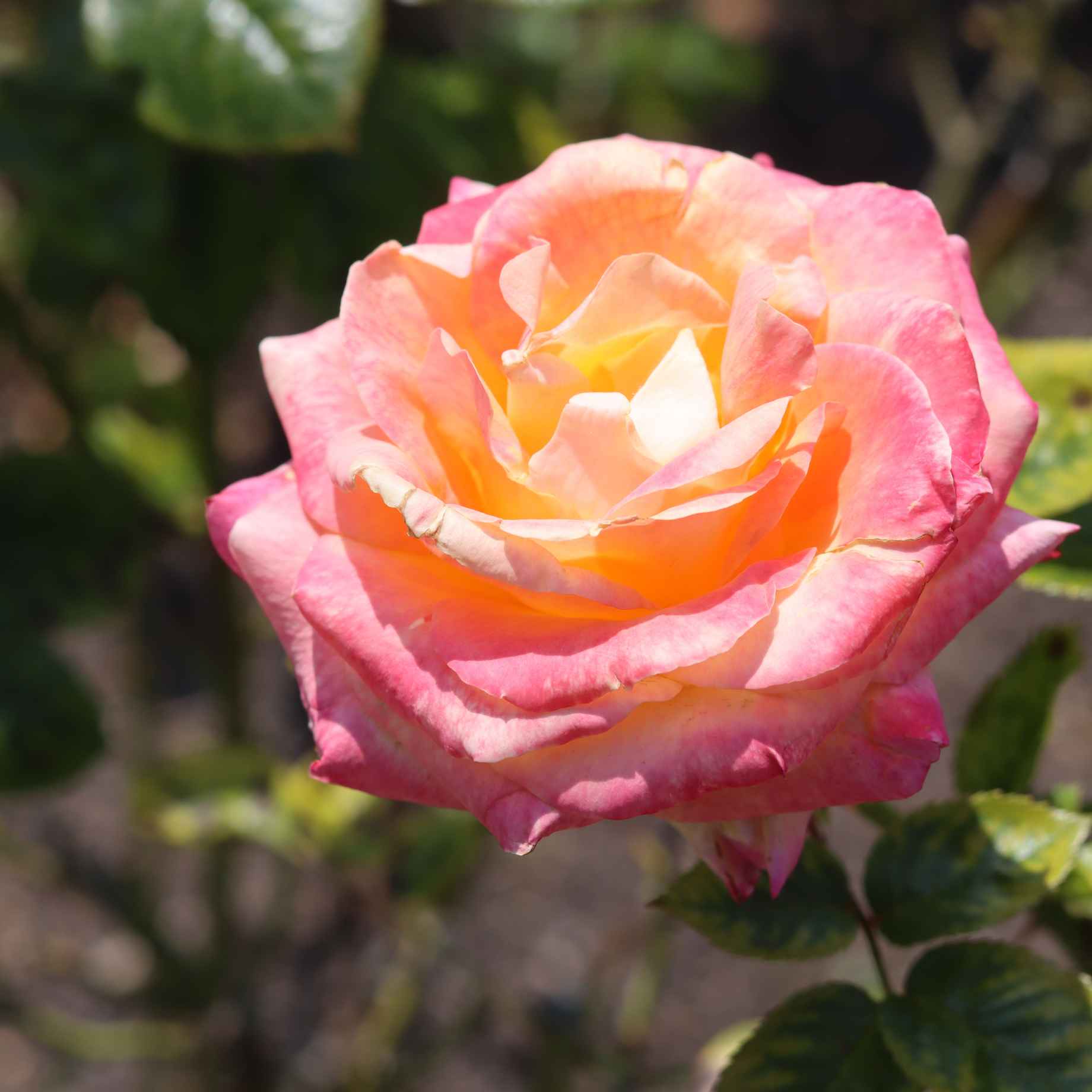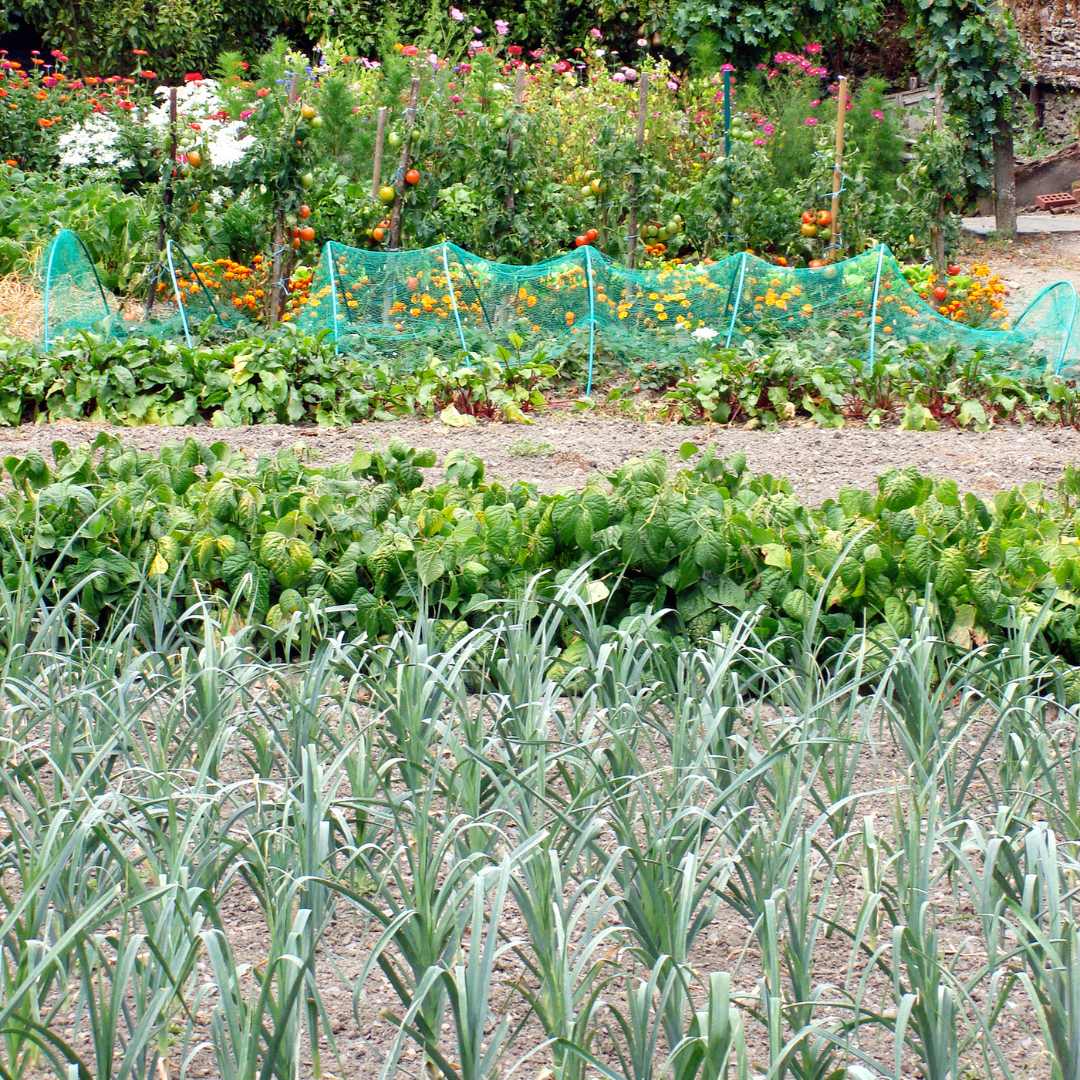Tell Me More…
So aptly named, Brunnera macrophylla Alexanders Great is exceptional for its huge, lush, intricately patterned leaves which create a head-turning display in a shady area. Grown primarily for the fantastic foliage display, loose, airy clusters of dainty blue blooms add the ‘piece de resistance’ in spring. The flowers are held high above the foliage on wiry stems, a vital treat for passing pollinators.A close sibling to the ever-popular Jack Frost, though with much larger leaves, Alexander’s Great will reach around 30-45cm tall and spread up to 75cm.Known by the common name Bugloss, which in Greek means ‘ox tongue’. This probably refers to the shape and roughness of the leaves which deters deer, rabbit and slugs. Dense carpets are formed, suppressing weeds. Brunnera thrive in shade and will tolerate a little morning sunshine, the patterned foliage performing best in shade. Requiring cool, moist soil, Brunnera macrophylla Alexanders Great can cope with drier conditions once established. A fully hardy perennial so you can enjoy it for years to come without the need for winter protection.
Flower and Foliage Months
Jan
Feb
Mar
Apr
May
Jun
Jul
Aug
Sep
Oct
Nov
Dec
Foliage Month
Flowering Month
Key Information
| Latin Name | Brunnera macrophyla ‘Alexanders Great’ |
|---|---|
| Common Name | Siberian Bugloss,Great Forget-me-not |
| Hardiness | H6 (-15 to -20°C) |
| Colour | Blue |
| Type | Perennial |
| Format | 9cm Pots |
| Position | Full-Shade, Part-Shade, Part-Sun |
| Foliage | Deciduous |
| Height in Maturity (m) | 0.40 m |
| Spread in Maturity (m) | 0.90 |
| Soil Conditions | Chalk Clay Loam Sand |
| Soil Acidity | Acid Alkaline Neutral |
| Aspect | East-facing, North-facing, West-facing |
| Good for pots | Yes |
| Good for Rockeries | Yes |
| Good for groundcover | Yes |

